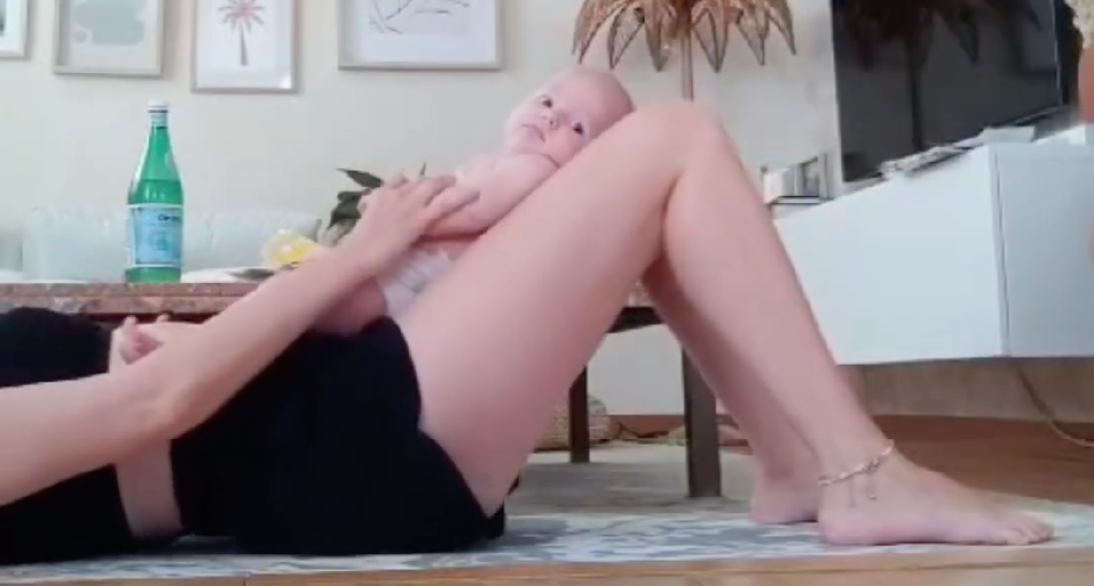It is common and not always a problem, but when is diastasis recti (or DRA – Diastasis Recti Abdominis) considered severe? The answer is less about a width or measurement, and more about how it feels and affects you.
If you are experiencing back pain or abdominal discomfort due to lack of core stability or function, this may be related to a severe DRA. When you feel unstable or unsupported through your trunk, or back or abdominal pain when lifting, squatting or working out.
Abdominal separation is a symptom of core instability, rather than a cause. So we should focus on the underlying issues of intra abdominal pressure, not only focus on ‘closing the gap’..
Research and current evidence-based practice tells us that the ability of the core muscles to work, function and hold us strong, does not solely rely on a closed diastasis gap. So when is diastasis recti considered severe and in need of surgical, and when might the gap not matter so much?
The ability to connect with, restore and recruit the deep muscles of the core, is vital to gaining function and strength. Merely closing the gap, isn’t.
Should you bind or splint a severe diastasis recti?
Diastasis recti protocols which recommend manual or forced closure by binding or splinting are not in line with the latest evidence based research.
The MUTU approach is to restore alignment and foundation core connection for natural deep core activation and whole body movement. This approach, is shown to reduce or eliminate pain from diastasis recti. MUTU is the medically recommended solution and has been proven to be safe and effective..
We do not advocate the use of a splint or binder at MUTU. New research confirms this hypothesis – that merely to aspire to ‘close the gap’ is neither helpful nor anatomically correct.
Functional Diastasis – When a gap isn’t a problem
Rather than focussing on the width of the gap to determine the cause of pain or weakness, recent research* looks at whether the fascia (connective tissue) of the diastasis gap) can generate tension.
You may be able to temporarily narrow the gap by engaging your abdominals, using your obliques. But it is the deep transverse that provides stability to our core. So even though the gap got smaller when you did that, there is still no tension (stability) through your trunk.
On the other hand you may be able to generate functional tension and stability through your transverse, but not affect the width of the gap. Your core is working just fine, there is no pain from diastasis recti, but there is still a gap. This is known as a Functional Diastasis. The gap really doesn’t matter.
How do you know the difference? Firstly understand how to check for diastasis recti. If you feel stable and strong when standing on one leg, or carrying out tasks such as lifting, squatting or working out that’s functional. If when you self-test for diastasis recti you feel firm tension at the midline (regardless of the gap) then this is functional. The gap is OK.
Does Diastasis Recti cause a ‘mommy tummy’?
Diastasis recti is not the only reason for abs that don’t look the way you’d like them to. We need to think bigger than one muscle.
The MUTU System program shows you how to re-train your core and pelvic floor do their job, how to get your tummy strong and toned, and how to eliminate pain with diastasis.
But it’s not all about the gap. Diastasis has become this kind of scapegoat, the Stooge, blamed in all our postpartum ab googling. “Fix that gap, your tummy will be flat” or “Nothing works right or looks right… because you have diastasis recti”.
It’s important, as it contributes to instability and weakness of the core, which is why MUTU System tackles it. But it’s not IT. And if you tackle diastasis in isolation, you’ll never get the tummy you want.
Extra fat might be covering up your strong, toned abs. Nourishing your body to heal the midline of your abdomen will regenerate collagen and gain strength. Will a small gap remain? Possibly. Does it matter? Not really. And obsessively measuring it will help neither body nor mind.
You can narrow the gap and strengthen and flatten your abs with the right exercise. Work on adjusting your whole body alignment and stretch and work your muscles to get a strong functioning core and pelvic floor. And losing fat will also affect how your tummy looks. ( MUTU System’s quite good for all of that incidentally 😉 ). But you won’t fuse the 2 parts of the rectus abdominis muscle tightly back together again. Which is actually, perfectly OK.
When is Diastasis Recti considered severe and a real problem?
Whether you’re a new mom or trying to heal a diastasis recti years later – if you have pain from a DR it’s a problem. If your back hurts, if your abs or core feel unstable, weak or like you’re ‘falling out at the front’… if your trunk can’t do what you want it to do.
It may be related to bladder or pelvic floor weakness. 66% of women with diastasis recti have some level of pelvic floor dysfunction**.
Diastasis is considered severe when the connective tissue is stretched and the muscles of your core can no longer support your pelvic and abdominal region. Specifically, when your deep core cannot generate tension and hold you stable and strong.
Current research and practice suggests that, and MUTU is always based on the most up to date knowledge and evidence. MUTU System is proven to heal and strengthen and to reduce pain with diastasis recti.
Research references *Lee & Hodges 2013. The lecture “New Perspectives from The Integrated Systems Model for Treating Women with Pelvic Girdle Pain, Urinary Incontinence, Pelvic Organ Prolapse, and Diastasis Rectus Abdominis” can be viewed in full on Diane Lee’s site here. **Spitznagle et al 2007











